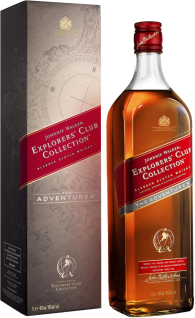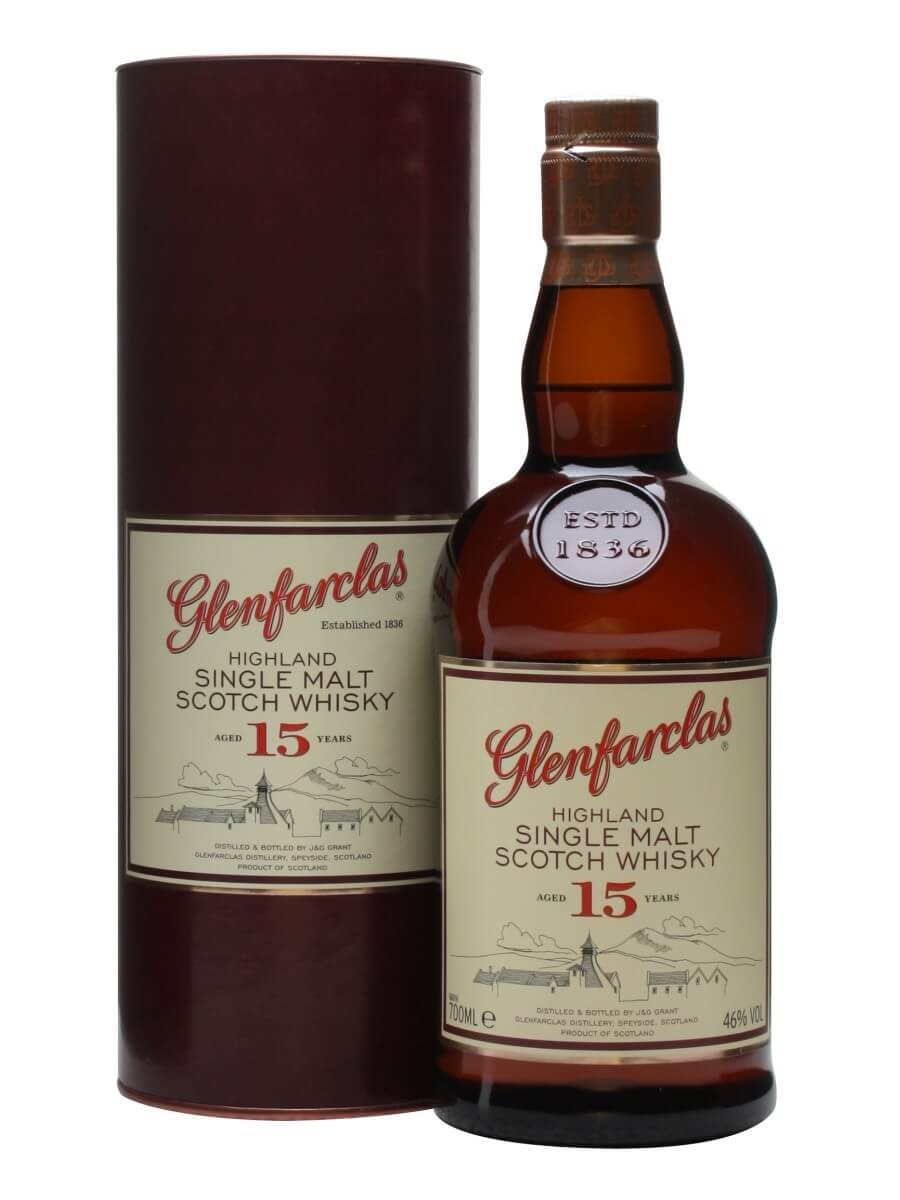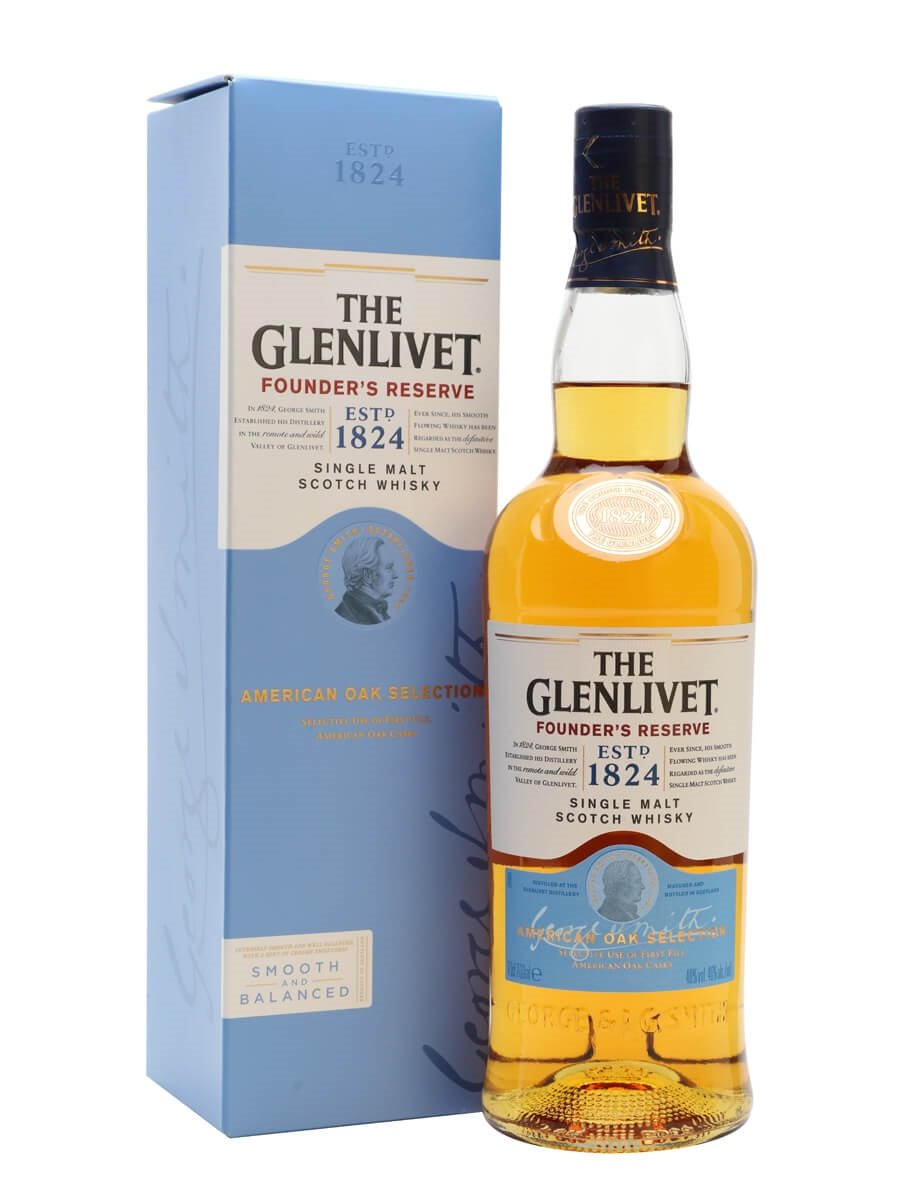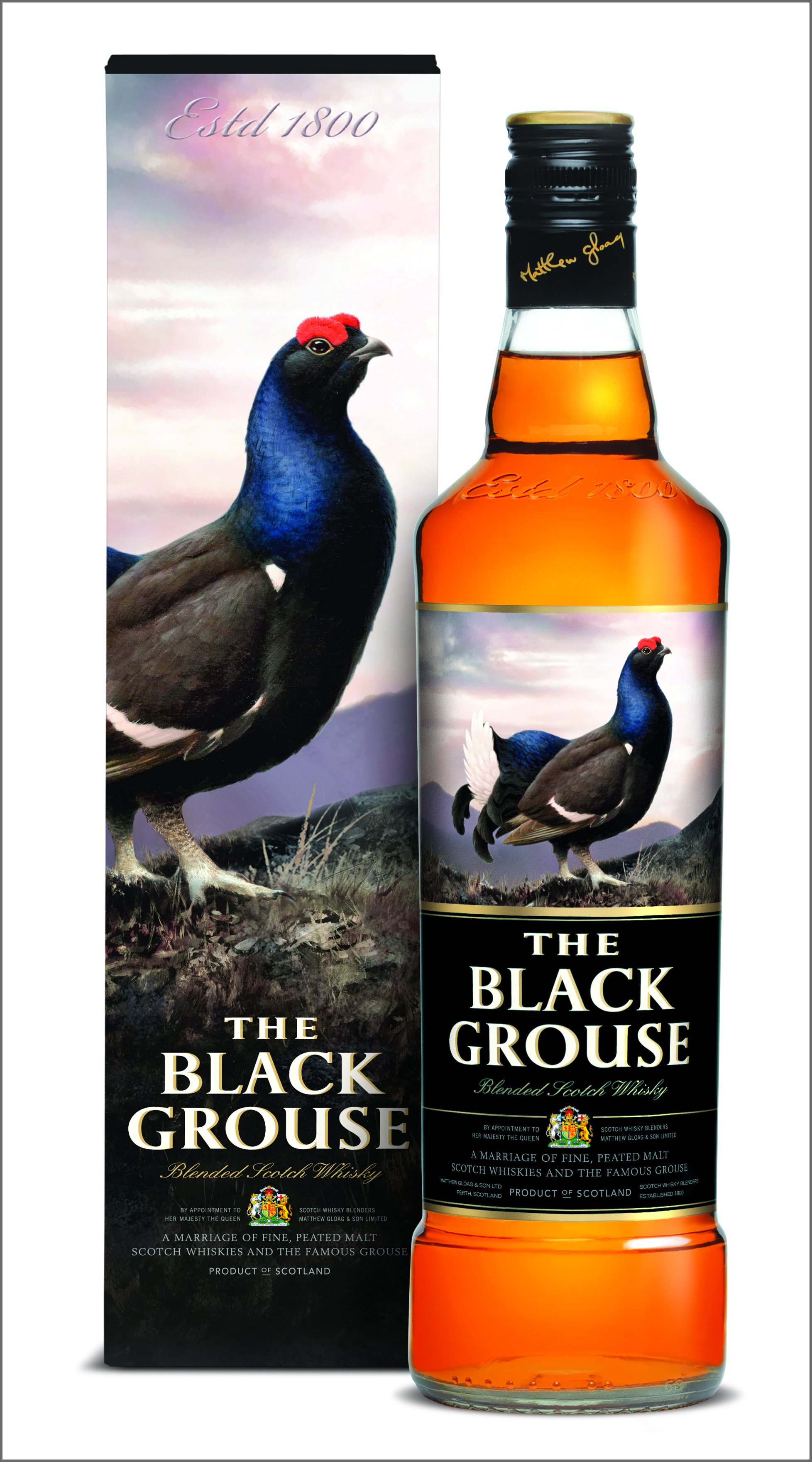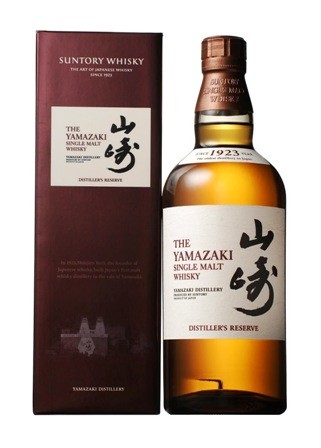By Michel Hansen at http://desvendandowhisky.blogspot.com.br/2014/07/glen-grant.html
Hoje entraremos no mundo dos single malt. Como já foi visto, single malt é o whisky produzido com cevada maltada e produto de uma única destilaria. Como iria falar da destilaria Glen Grant e também do whisky produzido por ela, vou aproveitar e juntar as duas coisas. Agora, sempre que eu falar de uma destilaria e também possuir o whisky, farei isso, para não ficar repetitivo. Vai ficar um pouco mais extenso o texto, mas o conteúdo é interessante.
A destilaria Glen Grant, em Rothes, foi construída em 1840, com arenito vermelho. Fica numa área silvestre afastada, com pomares, lagos e uma cachoeira caudalosa, e, além disso, o seu cofre foi construído numa rocha da região. Conserva até hoje um aspecto sólido e senhorial.
Foi fundada por James Grant, advogado de Elgin, e seu irmão John, comerciante de grãos que afirmava ter aprendido tudo sobre a fabricação de whiskies quando era fornecedor das destilarias clandestinas da região. Eles já haviam arrendado a Aberlour em 1833 juntamente com os irmãos Walker, de Elgin. A locação escolhida fica perto do córrego Black, num vale coberto, com água pura do poço Caperdonich, que corre do alto da montanha.
O local era muito bom para uma destilaria. O riacho Glen Grant fornecia a água para a mash e energia para o maquinário. Os grãos vinham dos campos de cevada de Moray, bem perto. E, a partir de 1858, quando o primeiro trem a vapor chegou a Rothes, passou a haver também a ferrovia. Na destilaria Glen Grant pode-se observar a riqueza vitoriana na sua mais grandiosa expressão. Os Grant queriam que todos soubessem que eles, uma das grandes famílias da região, haviam aderido à indústria do whisky.
John morreu em 1864, e seu irmão conduziu a destilaria sozinho até seu filho James Júnior, entrar para o comando em 1872, aos 25 anos, e assumir a administração dos negócios. Ele fez da fábrica de sua família uma das mais importantes empresas do mercado de whisky. Foi sob seus cuidados paternalistas que ela prosperou. Quando não estava caçando na África, ele dedicava um tempo considerável em transformar a destilaria numa produtora de whisky de porte.
O garoto era fascinado por inovações, e por isso a Glen Grant foi a primeira a ter eletricidade. Ele ainda projetou os alambiques altos com seus exclusivos purificadores, que produzem o single malt característico da empresa. Estes estranhos alambiques, com potes e purificadores que parecem capacetes, produzem um malte puro, seco e delgado.
Conhecido como “o major”, vestindo casacos de tweed e usando um bigode de morsa, era um típico cavalheiro. Depois do jantar, o major costumava levar os convidados para o jardim e abrir um cofre escondido na rocha, que revelava uma bandeja com copos e uma garrafa de Glen Grant. Quem desejasse água, podia levar o copo até as águas rápidas do córrego próximo. Ele ainda teve tempo de criar o seu jardim de estilo vitoriano, que sobe a montanha em direção à cachoeira e que é hoje a grande atração da destilaria, quase tanto quanto a produção de whisky.
Major morreu em 1931, e a Glen Grant foi assumida por seu neto Douglas Mackessack, que juntou forças com Armando Giovinetti em 1961 para tornar o Glen Grant o whisky de malte mais popular da Itália. A destilaria ficou com a família até 1977, quando foi vendida para a Seagrams. Depois de passar pelas mãos da Pernod Ricard, de 2001 a 2006, faz parte agora do grupo Campari. Apesar de ter pouca atenção em sua terra natal, é um dos cinco maltes mais vendidos do mundo.
Malte
O malte de cevada para a Glen Grant tem características específicas, seco, quebradiço, crocante e aromática.
Processo de destilação
Ao contrário de alguns mais pesados e mais robustos single malts, Glen Grant é nítido, claro, fresco e leve. O que realmente o distingue de outros maltes é o processo de destilação único. Como primeiro passo, usa-se alambiques incrivelmente altos, que ajudam a garantir que apenas o espírito mais leve se torne Glen Grant. Em segundo lugar é a única destilaria a usar purificadores nas destilações. Esta foi uma invenção de James "O Major" Grant, que é usada até hoje. Isto garante que apenas vapor puro passe para o condensador, e, por conseguinte, cria um whisky fresco e leve.
Envelhecimento
O tempo desempenha um papel vital na maturação do whisky. No Glen Grant dá-se extrema importância no tratamento dos barris. Meticulosamente são escolhidos os melhores cascos de Bourbon e Sherry, garantindo que eles serão utilizados apenas um determinado número de vezes. Este processo lento de envelhecimento em cascos de carvalho de qualidade superior dá a Glen Grant sua cor e sabor único, decididamente fresco e frutado. Todos os cascos são individualmente escolhidos a dedo por Dennis Malcolm, um dos oito ilustres Mestres Destiladores desde 1890.
Mestre Destilador Dennis Malcolm
Verdadeira personalidade. Um malte único é o reflexo de seu Mestre Destilador. É uma arte de equilibrar tradição e inovação, uma habilidade que só pode realmente ser adquirida através da experiência. Ninguém sabe sobre Glen Grant mais intimamente do que Dennis Malcolm. Ele começou a trabalhar na destilaria como um aprendiz quando tinha apenas 15 anos de idade. Nos últimos 50 anos Dennis tem dedicado sua vida para manter a qualidade e a integridade do Glen Grant. Sua paixão e objetivo é garantir que os bebedores de Glen Grant ficarão felizes, ao garantir que cada garrafa produzida pela destilaria será de qualidade excepcional.
Centro de Visitantes
Glen Grant Distillery fica no extremo norte da vila de Rothes, cerca de 10 quilômetros ao sul de Elgin. Os ônibus de Elgin param a 100 metros da destilaria. Anualmente, cerca de 10.000 visitantes vão descobrir a magia da destilaria. Conhecedores e visitantes de todo o mundo realizam a turnê da destilaria e ao final levam garrafas para casa e recordações de sua experiência única.
Histórico de Glen Grant
1840 – Glen Grant é fundada
Em 1840, os irmãos John e James Grant pediram uma licença de destilaria. Com o mar e o porto de Garmouth nas proximidades, o rio Spey ao sul, e cercado por planícies de cevada crescendo, todos os ingredientes básicos para o whisky de malte estavam por perto.
1872 – Um novo Glen Grant. Em 1872, os fundadores da Destilaria Glen Grant tinham morrido. Jovem, James "O Major" Grant, nascido em 1847, sempre tinha tido um grande interesse na destilaria e a assumiu. Sua meta era provar a si mesmo ser um sucessor digno.
1900 – Crescimento e expansão
Um inventor lendário, socializador e viajante, "O Major", era fascinado por novas ideias e não tinha medo de explorá-las. Ele foi o primeiro homem no Planalto a possuir um carro. Glen Grant foi a primeira destilaria a ter luz elétrica e ele introduziu as soleiras delgadas altas e purificadores que criou o sabor maltado fresco e a cor clara que define o whisky até hoje.
1909 – Música e whisky
Na Escócia, música e Scotch Whisky sempre foram ligados. Tanto é assim que o famoso violinista escocês Scott Skinner (1843-1927) compôs a música para o violino como um tributo à destilaria Glen Grant e seu Malt Whisky. O Strathspey (uma dança escocesa animada) intitulado "Glen Grant" foi composta em 24 de Abril de 1909.
1931 – Um fim e um começo
Em 1931, o major Grant, o último Grant, morreu. Douglas Mackessack, seu neto, viria a se tornar seu sucessor.
1972 – A família expande
Em 1972, a Glenlivet e a Glen Grant fundiram-se com Hill, Thomson & Co. Ltd, e a Longmorn Distillers Ltd para formar a Glenlivet Distillers Ltd. O interesse das famílias originais nas destilarias foi mantida, juntamente com dois acionistas externos substanciais: Courage Ltd, para o processo de fermentação, e Suntory Ltd, a empresa japonesa de destilação.
2006 – Um novo capítulo
Em 2006, a Campari adquiriu a Glen Grant. É ainda um dos single malts mais vendidos no mundo. Sua história continua em Speyside, de acordo com as mesmas normas e tradições da família Glen Grant e seus descendentes.
O que pude perceber:
Aroma: lembra um pouco o Bourbon por sua doçura. Bastante floral e também frutado. Notas de maçã e às vezes pera. Senti também um leve aroma de chocolate branco. Quando se adiciona água, mantém as características de aroma, porém menos acentuadas. A doçura do Bourbon some para intensificar o frutado. Quando experimentei após adicionar uma pedra de gelo, o aroma fica ainda mais suave.
Sabor: Leve, suave, um pouco seco. Pude confirmar no paladar o sabor frutado. O final é curto. Com água, fica mais suave. O final resiste um pouco mais, mas continua curto. Com gelo, fica mais fresco, mais frutado, surge um certo sabor de baunilha e fica ainda mais suave.
É um whisky excelente para beber sem a preocupação de degustar, pois é um whisky simples, sem muita complexidade. Tem a cor bem clara, natural, sem adição de caramelo. Também por ser um whisky jovem. É leve, excelente para o dia-a-dia. Tem um ótimo custo benefício, pois é um Single Malt e está numa faixa de preço abaixo de R$ 100,00. Não é um whisky intenso como um bom Single Malt pode ser, mas é uma boa porta de entrada para quem quer se aventurar neste tipo de whisky. Encontra-se nas lojas virtuais e em alguns supermercados numa média de R$ 84,00. Comprei o meu a R$ 67,00.
Aqui vou fazer um parênteses: sempre coloco aqui o valor que pode ser encontrado e o valor que encontrei, geralmente um pouco mais baixo, para mostrar que com um pouco de paciência e às vezes sorte, é possível encontrar whiskies com seus preços bem abaixo do mercado. Quase sempre uma ou outra loja, um ou outro supermercado faz alguma promoção. É preciso estar atento às oportunidades e aproveitar. Sempre estou de olho nos preços, e quando encontro algo que está abaixo do normalmente praticado, não penso duas vezes.
Glen Grant Single Malt:
Single Malt: Speyside teor Alc 40%
Leve, espirituoso e floral no nariz. Frutas cítricas, flores, pera, maçã, baunilha, malte e madeira.
Inicialmente seco no palato, porém, sabores de nozes, laranjas, baunilha e castanhas se desenvolvem. Um final de ervas arremata este whisky estilo aperitivo.
Aproveitem. Saúde.

